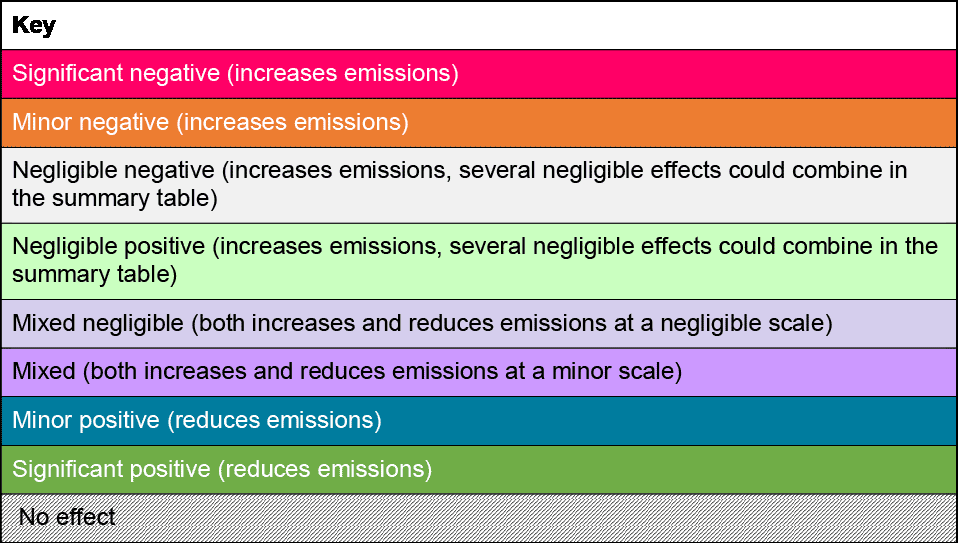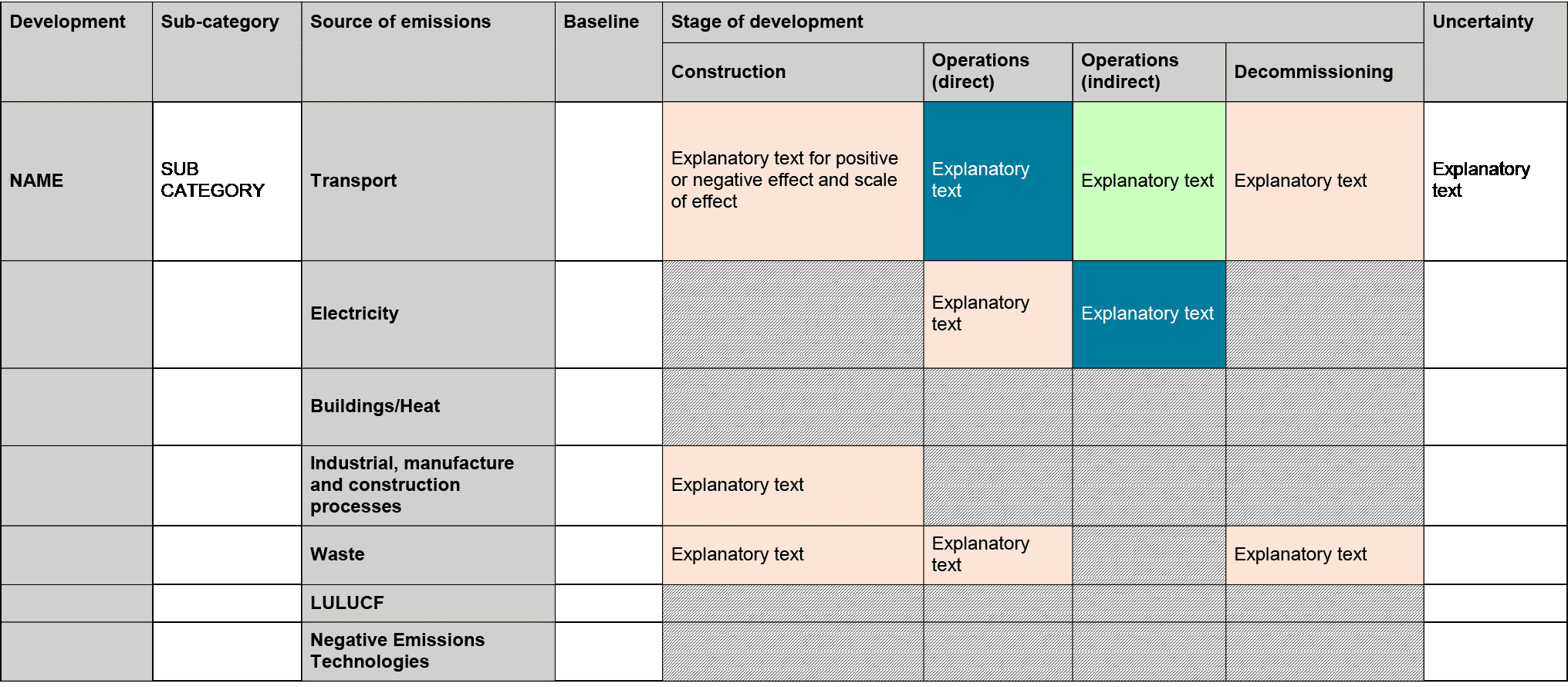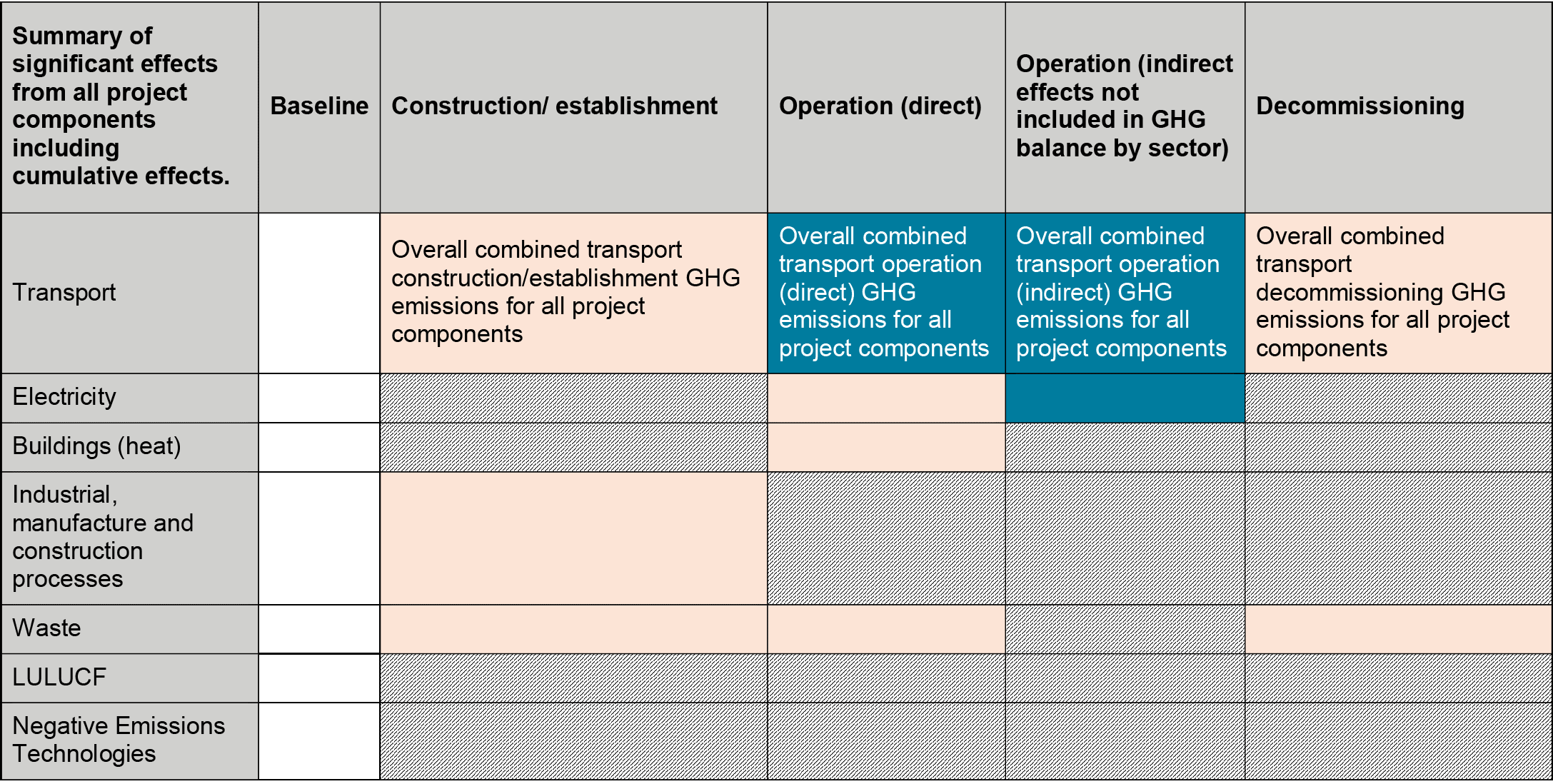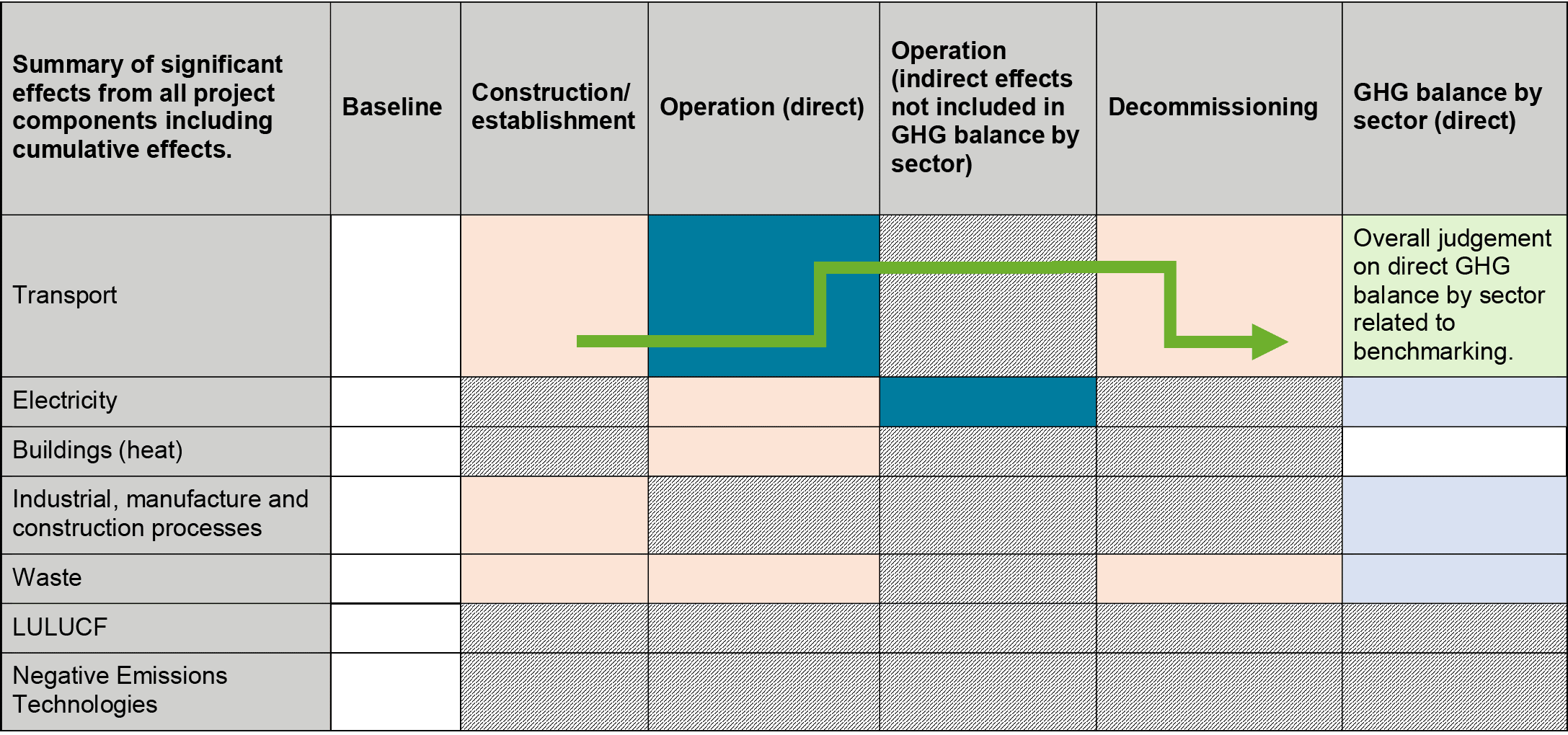Scotland 2045: fourth National Planning Framework - draft: lifecycle greenhouse gas emissions - research
This report provides findings of a research project on lifecycle greenhouse gas emissions of proposed national developments in the draft National Planning Framework 4 (NPF4).
1. Introduction
Introduction
1.1 This report sets out findings from the finalised assessment of lifecycle greenhouse gas emissions of proposed National Developments.
1.2 The assessment of the scope of the proposed national developments is based on the information provided by the Scottish Government and informed by associated assessment assumptions. The development descriptions should be read alongside the information provided on the proposed national developments in NPF4.
Methodology overview
1.3 A detailed methodology was developed in consultation with the Scottish Government and project steering group and is provided in Annex B. To summarise the methodology, the assessment follows two main stages:
a. an assessment of all of the individual components of a development (some projects have multiple and diverse components which are assessed individually) to identify positive (decrease emissions) or negative (increase emissions) and the significance of these.
b. a summary assessment which draws the project components together and provides conclusions on net direct, indirect, and overall effect. The summary assessment relates the scale of effect on GHG emissions to a national benchmarking exercise, included in the methodology. This uses the scale of minor, moderate, major, or super in terms of positive or negative contributions to GHG emissions.
1.4 The assessment is structured against the six emissions sectors of transport, electricity, buildings (heat), industrial, manufacturing and construction processes (including embodied carbon), waste, and land use, land use change and forestry (LULUCF). Negative Emissions Technologies are included for the proposed Industrial Green Transition Zones, but is not relevant to the scope of the other national developments included in the assessment. Agriculture sector emissions are also excluded as not relevant to the scope of the national developments included in the assessment. The assessment considers construction/establishment impacts, operations (direct), operations (indirect) and decommissioning effects.
1.5 The assessment provides initial separate conclusions on the overall direct effects and overall indirect effects, before combining these in an overall summary of effect. This concludes whether the effects of the proposed national development are net positive (decrease emissions) or net negative (increase emissions).
1.6 For some of the proposed national developments direct effects may increase emissions in the short term, but positive indirect effects may occur over the longer term. The overall summary provides a judgement on the balance of direct and indirect greenhouse gas emissions.
1.7 The proposed national developments are developments that the Scottish Ministers consider strongly support the draft NPF4 spatial strategy, i.e. are ‘needed’. Designation as a national development does not remove requirements for relevant consents to be obtained before development can begin and it follows that there is considerable uncertainty as to the detailed scale and location of development that would occur and around the implementation of new technologies. The assessment has therefore drawn on a number of assumptions based on the descriptions in the draft NPF4. Consequently, the overall summary of effect for each proposed national development may include a range in the scale of potential impacts on greenhouse gas emissions.
1.8 The overall summary of effect is therefore based on the detail provided at the time of the assessment, and the conclusion may alter depending on the nature and detail of the projects taken forward.
1.9 Additional mitigation and enhancement included in the assessment has been identified by LUC.
Summary of methodology
1.10 This section provides an overview of the methodology applied to the assessment process. The stages in this process are summarised in Figure 1.1 and described in more detail in the following sections. The assessment is based on the proposed national development description and supported by assessment assumptions.
Figure 1.1: Assessment Stages
1. Assess individual project components by sector and by lifecycle stage (direct and indirect effects)
2. Combine effects from all project components by sector and lifecycle stage (direct and indirect)
3. Combine direct effects across lifecycle stages to identify direct GHG balance by sector
4a. Comibne direct GHG balance by sector to give overall direct GHG balance
4b. Combine indeirect effects by sector to give overall indiect GHG balance (where indirect effects identified)
5. Combine direct and indirect effects (where applicable) to give overall lifecycle GHG effects
Overview of methodology stages
Stage 1
1.11 The assessment firstly identifies the nature and scale of the effect for each project element, by sector and lifecycle stage. This is scored using the following system, shown in Table 1.1:

1.12 An example of the assessment table which applies this scoring system is illustrated in Table 1.2 overleaf:

1.13 Table 1.2 is repeated for as many sub-categories of the proposed or alternative national development as required.
Stage 2
1.14 This is then followed by a summary table which combines all project components to identify the balance of effect by sector, by lifecycle stage. The main body of the summary table is illustrated in Table 1.3 overleaf:

Stage 3
1.15 Combining the direct effects by sector, the overall GHG balance is identified, as positive or negative, (see the final column of Table 1.5), and the scale of that effect is related to the benchmarking for that sector using the colour coding shown in Table 1.4 below. The benchmarking relates to the quantity of 2021 emissions reductions by 2032, and is explained in more detail in the separate method document:


Stages 4a, 4b and 5
1.16 Following the sector-by-sector combination of effects, summary text is provided for direct effects, indirect effects and the overall summary of effects, as shown in Table 1.6.
Table 1.6: Process for identifying summary GHG balance for direct, indirect and overall effects
Summary of direct lifecycle GHG effects
Describes the overall direct lifecycle GHG effects, noting the confidence level related to effects for each sector. The overall effect is identified as net positive or negative.
Summary of indirect lifecycle GHG effects
Describes the overall indirect lifecycle GHG effects. The overall effect is identified as net positive or negative.
Summary of overall lifecycle GHG effects
Describes the overall effect, combining direct and indirect effects. Identifies the scale of the effect, which may be a range depending on uncertainties associated with the proposed national development. Attributes a confidence level to the scale and / or nature of the effect.
Additional mitigation and enhancement
Describes suggested mitigation and enhancement.
Contact
Email: Chief.Planner@gov.scot
There is a problem
Thanks for your feedback